Why the Film Industry Usually Ruins Cinematic Adaptations
Introduction
 One would think that when it comes to the film industry making a movie that’s
an adaptation – whether it’s based on a novel, comic book/graphic novel or video
game – it wouldn’t be that hard. One would think that when experienced
professionals are involved, it would be like making pizza – even if the final
result is bad, it’s still nevertheless going to be at least decent, given that
all the key ingredients are there. Not necessarily. One would think that when it comes to the film industry making a movie that’s
an adaptation – whether it’s based on a novel, comic book/graphic novel or video
game – it wouldn’t be that hard. One would think that when experienced
professionals are involved, it would be like making pizza – even if the final
result is bad, it’s still nevertheless going to be at least decent, given that
all the key ingredients are there. Not necessarily.
Certainly, there are instances when the film remains relatively true to their
source material – ‘Fear and Loathing in Las Vegas’ (1998), ‘Sin City’ (2005),
‘Hellboy’ (2004), ‘Witches’ (1990). And sometimes a film adaptation can actually
be even better than the source material – ‘The NeverEnding Story’ (1984),
‘Jurassic Park’ (1993), ‘One Flew Over the Cuckoo’s Nest’ (1975). Usually,
though, the results are disastrous. There are numerous reasons why a person’s
favorite novel, comic book/graphic novel or video game will end up one of the
worst films ever made. Sometimes, with all things considered when it comes to
the convoluted process of film adaptation, it’s almost inevitable.
Essential and Nonsensical Abridgement
It’s an unfortunate fact that abridgement is essential when it comes to film
adaptation. There’s just no way that a novel with hundreds of pages can be
condensed into a 90 minute movie without losing something. Scenes have to be cut
or condensed, dialogue has to be kept to a minimum, sections have to be
re-structured and sometimes the whole story has to be re-constructed.
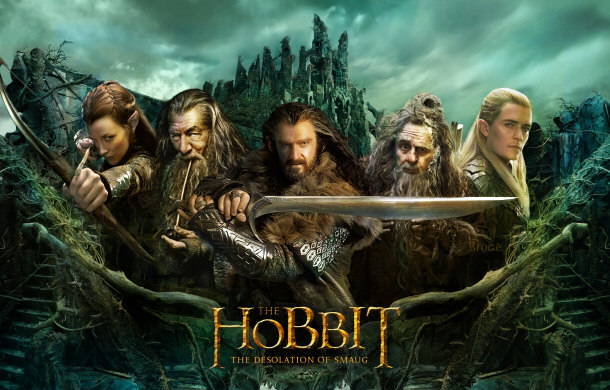
This was
the case for Peter Jackson’s epic cinematic adaptations of J.R.R. Tolkien’s
‘Lord of the Rings’ trilogy – ‘The Fellowship of the Ring’ (2001), ‘The Two
Towers’ (2002) and ‘Return of the King’ (2003) – based on the books of the same
names, first published between 1954 and 1955 and ‘The Hobbit’ trilogy – ‘The
Unexpected Journey’ (2012), ‘The Desolation of Smaug’ (2013) and ‘There and Back
Again’ (2014) – based on the novel, ‘The Hobbit, or There and Back Again’
(1937).
|
Dune (1984):
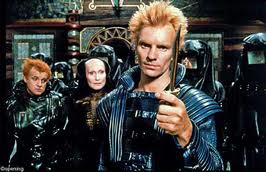
|
Just what (and sometimes why) certain things are cut is questionable. While
Peter Jackson managed to successfully translate Tolkien’s work into the medium
of film without losing too much in the translation, other directors haven’t been
so lucky. Namely, David Lynch and the original cinematic adaptation of ‘Dune’
(1984). The film was an adaptation of Frank Herbert’s 1965 novel of the same
name. It is noted as one of the worst adaptations of all time.
Too be fair, the film’s questionable adaptation wasn’t Lynch’s fault as he
was unable to have much creative control or influence over the project. In fact,
the film was such a mess due to outside influences, such as the producers
second-guesses all of Lynch’s decisions and encouraged him to essentially
dumb-down the film in an attempt to reach a wider audience. Ultimately, Lynch
disowned the final product, by demanding that the film’s director be credited to
as Alan Smithee – a pseudonym that directors, at the time, would use in place of
their name when they were dissatisfied with the final result, because of a lack
of creative control.
Translation
Sometimes a novel, comic book/graphic novel or video game just doesn’t
translate to film. Video games are especially complicated given that they often
have a branching narrative, with no distinct, linear storyline, given the
numerous narrative possibilities. Trying to adapt something like that into a
film usually only results in a convoluted and nonsensical plot.
Some stories are just uniquely suited to a single medium – either that or
they just won’t be as good, when adapted into film. For example, there’s an
inherent irony of a cinematic adaptations of Oscar Wilde’s ’The Picture of
Dorian Gray’ (1890), of which there have been a few. By adapting the story into
a film, the very thing that makes the book brilliant is immediately lost –
namely, the eloquence of Wilde. While the story of a man who does a deal with
the Devil to keep his angelic appearance, despite his far from seraphic soul,
while his numerous misdeeds are reflected not on his face but in a portrait he
keeps locked away is indeed strong enough to carry a movie, a film version would
never be as good as the novel without the words of Wilde.
Photograph of Oscar Wilde by Napoleon Sarony:
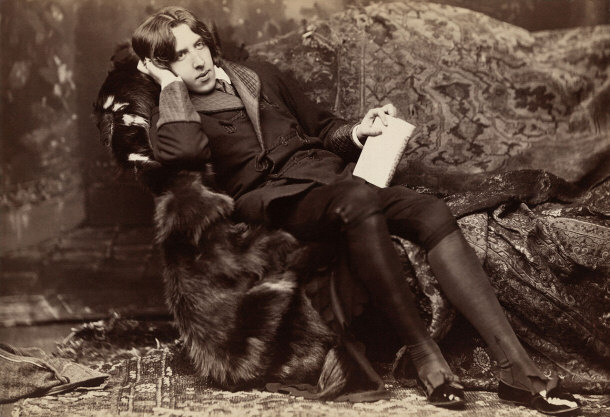
It’s true that telling a story through the medium of a novel, comic
book/graphic novel is dramatically different to telling that same story through
the medium of film. It’s certainly not impossible, though. A great director with
respect for both mediums can make it work.
When Edgar Wright signed on to direct ‘Scott Pilgrim vs. the World’ (2010),
the cinematic adaptation of the graphic novel series ‘Scott Pilgrim’ (2004 –
2010) by Bryan Lee O’Malley, he approached the project with a strong desire to
mix the best elements of the cinematic, comic book and video game worlds. Wright
achieved his goal by incorporating into the film video game title sequences,
comic book illustrations over the live-action footage, all of which worked
perfectly given that the storyline itself – a guy who has to defeat his new
girlfriend’s ex-partners in order for them to be together – that echoed that of
a video game, with each battle taking place one after another, each getting
harder and harder, like the battles at the end of each level of a video game.
Scene from Scott Pilgrim vs. the World’ (2010):
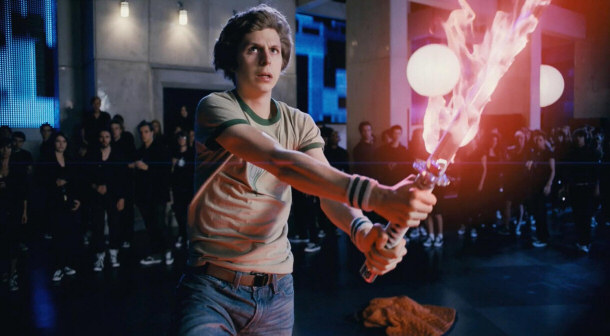
Watering Down
One of the worst comic book adaptations by far is ‘Spawn’ (1997). The movie
was so bad that arguably the movie’s biggest star, Martin Sheen, refused to
promote it. Keep in mind that this was before Sheen’s career was rejuvenated by
his starring role in ‘The ‘West Wing’ (1999 – 2006) so he could have used all
the attention he could get, with his career at an all time low.
Despite the questionable creative decisions and result of the film’s
production, ‘Spawn’ creator Todd McFarlane was a fan of the film, because in his
mind they created what he wanted – that is, a PG-13 movie that introduced the
character of Spawn to a younger audience than the comic book series had.
Spawn:

By Gage Skidmore
via Wikimedia Commons
This is especially perplexing given that the comics tackled very adult themes
and featured graphic violence. Even with the adult themes and violence toned
down, the fact remains that the story is about an American assassin, who loves
his job – like, REALLY love his job – who, when he gets murdered, trades his
soul to the devil in return for going back to earth.
The film isn’t terrible but it’s certainly not great or even good – just ever
so slightly above average, really. It’s worth watching for the cinematography of
Oscar winner Guillermo Navarro, and especially for John Leguizamo’s performance
as the villain. Or, out of morbid curiosity, it’s worth watching to see just how
far off the mark Hollywood can go when comes to watering down adaptations –
seriously, their objective with this film was to make a movie about a serial
killer that was accessible and appropriate for children!
No Story
It’s hard to believe given just how crucial and fundamental this element is,
but sometimes film adaptations fail because they, quite simply don’t have a
story. It would seem that no-one would even think about trying to make a film
without a story. So what do film makers do when they don’t have a story? They
try and create one, out of nothing, with inevitably disastrous results.
Arguably one of the worst movies you could see made by people who should know
how to make a movie is ‘Super Mario Bros.’ (1993). The story (for lack of a
better word) involves Mario and his brother Luigi, who find themselves in an
alternate universe and the only hope for humankind. It is based on the extremely
popular Mario Bros. video game series from the 1980s and 1990s. The film was far
from as successful as the video games – and with good reason.
Scene From Super Mario Bros. (1993):
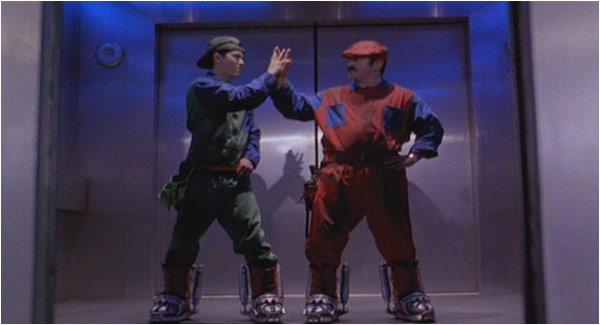
In the game, Mario and Luigi must navigate the alternate world – known as the
Mushroom Kingdom – overcome the minions of the main villain, Bowser, with the
objective of saving the Princess Toadstool. The video game is one of the classic
and most popular video games of all time. It was therefore understandable that
Hollywood wanted to capitalize on the success with a film adaptation, but they
overlooked the key issue with the game – that is, it was great because there was
one thing and one thing only that engaged the audience and that’s the game-play.
If anything, people loved and played the game DESPITE the story.
Contempt for the Source Material
Given the commitment that goes into making a movie – which usually involves
two to three years from pre-production to post-production – it’s astounding to
think about some of the reasons why key creative people take on the
responsibility of making certain movies. The process of making a film is a lot
to take on for a director, as they run the risk of burning-out from the inherent
stress, straining personal relationships, coupled with the toll the whole
process can take on them physically and mentally given the long and unusual
hours.
There’s always something somewhat genuine motivating them to put themselves
through the process, but it’s not always the best motivation. Tim Burton’s
motivation behind directing the first two of the original Batman movie franchise
– ‘Batman’ (1989) and ‘Batman Returns’ (1992) – were one such case. Respect for
the comic book certainly wasn’t the motivating factor. Rather, the opportunity
to bring the visual characteristics of a comic book to life seemed to be the
only motivation, given his appreciation and talent for Gothic aesthetics.
While the films were successful financially, the response from Batman fans
was justifiably mixed, given that there was little to no regard for Batman as a
character or exploration of the man behind the superhero mask, Bruce Wayne. This
is because Burton clearly never concerned himself with the character of Batman
or his secret, everyday alter ego of Wayne.
Batman/Bruce Wayne (1989 movie):
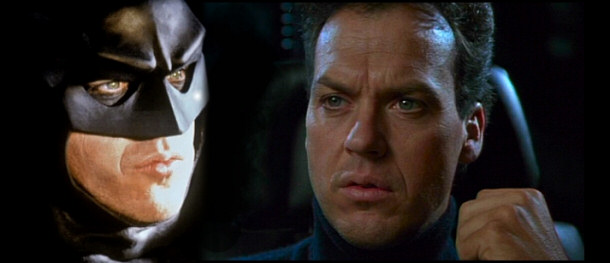
This fact became evident years later when Burton became engaged in a feud
with fellow film maker, Kevin Smith, when Smith jokingly accused Burton of
ripping off a scene from his comic book mini-series, ‘Jay and Silent Bob:
Chasing Dogma’ (1998 – 1999).
The scene in question involves monkeys taking over the Earth and replacing
the iconic Washington statue of Abraham Lincoln with the face of a monkey. When
Smith saw a similar scene in Burton’s remake of ‘Planet of the Apes’ (2001),
Smith joked with a journalist that Burton had ripped him off. The journalist
reported Smith’s comment – minus the sarcasm. Burton responded with a statement
that he’d never read a comic, least of all one by Kevin Smith. While Burton was
surely understating his association with comic books, his response revealed a
profound disregard for the medium of comic book/graphic novels as a legitimate
art form.
Joel Schumacher, who picked up the original Batman franchise after Burton’s
first two installments, directing the next two films ‘Batman Forever’ (1995) and
‘Batman and Robin’ (1997) also regarded the material with similar contempt. In
the documentary ‘Heckler’ (2007) he responded to those who accused him of
ruining the legacy of the character, by telling his critics that they should
stop taking themselves and the comic book so seriously, because it was JUST a
comic book movie.
The core of the fans’ criticism was that, despite just being a comic book,
there was much more depth to the character and stories of Batman, which is what
they had wanted to see explored in the films – something that Burton and
Schumacher had little interest in doing.
Burton and Schumacher’s contempt for the source material and Batman fans
alike was further highlighted when one considers the financial and critical
success of Christopher Nolan’s adaptations, ‘Batman Begins’ (2005), ‘The Dark
Knight’ (2008) and ‘The Dark Knight Rises’ (2012), all of which were based on
various Batman comic books over the years that themselves explored the character
of Batman in greater depth than ever before.
The Dark Knight (2008):
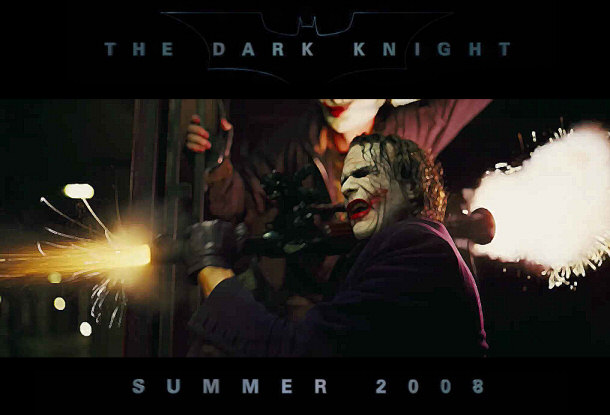
Given that Burton and Schumacher are genuinely talented directors, it’s
conceivable that they too could have achieved the same degree of creative
success with the Batman character as Nolan did – had they only had the same kind
of the respect for the source material that Nolan had.
Hollywood (Supposedly) Knows Best
Believe it or not, but there actually have been a few occasions when
Hollywood actually makes a film adaptation that is better – sometimes even
phenomenally better – than the source material – ‘Brokeback Mountain’ (2005) an
adaptation of the short story by Annie Proulx of the same name, first published
in 1997, and ‘The Talented Mr. Ripley’ (1999), based on the novel by Patricia
Highsmith, first published in 1955.
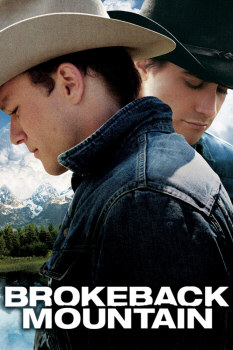 Still, it’s rare that the film industry actually make a film adaptation
that’s genuinely good. Of the adaptation that are genuinely good, there’s a
common thread. The reason why they’re better is because those few examples never
realized their full potential in the first – even Proulx, a Pulitzer Prize
winner, was surprised by just how much potential she had failed to realize with
‘Brokeback Mountain’ until the movie was produced. Still, it’s rare that the film industry actually make a film adaptation
that’s genuinely good. Of the adaptation that are genuinely good, there’s a
common thread. The reason why they’re better is because those few examples never
realized their full potential in the first – even Proulx, a Pulitzer Prize
winner, was surprised by just how much potential she had failed to realize with
‘Brokeback Mountain’ until the movie was produced.
Stanley Kubrick famously said of Stephen King’s novel ‘The Shining’ (1977),
which Kubrick adapted into a film in 1980, that it was a great story but that it
wasn’t literary – that is, that the story was great, despite the questionable
quality of the writing.
Understandably, King didn’t appreciate Kubrick’s critique. But Kubrick was
right, hence why a number of the films that are better than their source
material are film adaptations of King’s novels, because the ideas were always
there, but never fully realized – ‘The Green Mile’ (1999) based on the
serialized novel of the same name, first published 1996 and 1997 and ‘The
Shawshank Redemption’ (1994), based on the novella ‘Rita Hayworth and the
Shawshank Redemption’ (1982).
When the film industry takes an idea that has actually realized its full
potential in one medium, they’ll often end up dumbing it down and ultimately
stripping away just what made it great in the first place, because they’ll
assume that they can improve everything – whether it needs improving or not.
Sometimes the film industry’s dramatic alterations work. ‘About a Boy’ (2002)
dramatically deviated from the novel of the same name by Nick Hornby, first
published in 1998. The story is of a young boy who has no real father figure and
a mother who’s struggling to take care of herself, let alone her son.
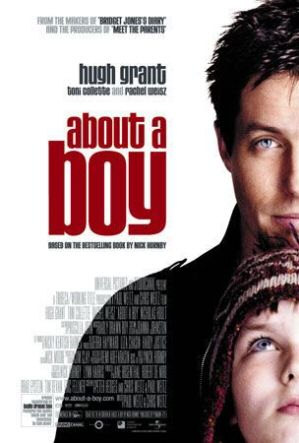
By Quentin X
via Wikimedia Commons
Thus, the
boy turns to a father figure in a male acquaintance of his mothers after his
mother tries to commit suicide. In the book, which is set in the in the early
1990s, the boy’s mother’s suicide attempts are correlated with the real-life
events that took place at the time of Nirvana’s front-man, Kurt Cobain, with his
initial suicide attempt in March of 1994 before his eventual suicide a month
later. This is all completely omitted from the movie. Nevertheless, the movie
works, as the essence of the story was retained, even with the script deviating
heavily from the source material. Remarkably, the movie and book are equally
great but for two totally different reasons. This is rare, though.
Another of Hornby’s novels ‘High Fidelity’ (1995) was one such adaptation in
2000 that deviated significantly from the book with curious results. The core
problem was that crucial (and often perplexing) alternations to the story were
made. The book was set in England with quintessentially English characters. The
setting for the film is America, with characters replaced with stereotypes.
Furthermore, almost all the pop culture references (which were key to the unique
style of the book) were altered.
High Fidelity’s Characters (1995):

Basically, the film cut out all the good elements (and in some cases key
elements) from the book, left all the unnecessary and insignificant parts and
added unnecessary and asinine elements. The movie wasn’t terrible, but it wasn’t
great. The book is a modern-day classic, while the movie is simply above
average.
Double-Dipping
Say Hollywood wants to make an adaptation of a comic book that’s a cult
classic. The producers are going to figure that they have a guaranteed audience
with the hardcore fans of the comic, who are already willing to pay to see the
film, long before it’s even produced. That’s a rarity in the film industry when
you can pretty much guarantee a decent, if not great, opening night, because the
audience is already there, eager to embrace the film, regardless.
This is where the industry gets greedy. They figure that the pre-established
audience are going to see the movie regardless – even if they hate it (as is
usually the case), that’s a guaranteed solid opening weekend at the box office.
They figure that they might as well try and reach another audience altogether
– people who might not have even heard of the comic book on which the movie is
based – so they will tweak the idea – continuously.
In the late ‘90s writer/director Kevin Smith was given the opportunity to
read a script for a planned Superman movie and give his feedback. As a hardcore
comic book fan – especially Superman – he embraced the opportunity, until he
actually read the script. It was terrible and let it be known in no uncertain
terms. He was asked to re-write it. Instead, he wrote an entirely new script
from scratch.
The script was called ‘Superman Lives!’ The producer of the film was Jon
Peters. Despite his proclaimed love of the comic, he had little respect for
source material. After Smith had writing a treatment or outline of the film,
Peters set out a number of rules for Smith to adhere to while writing the
screenplay. Peters didn’t want to see Superman fly, didn’t want to see him
wearing a cape or wearing the Superman suit... so, basically, Peters didn’t want
to see any of the elements that made Superman who he was, because he hated all
the things that made Superman Superman. Ultimately, Peters wanted to re-invent
the idea of Superman and make the idea more accessible for the mainstream
audience.
Certainly, sometimes the idea works – Burton’s darker interpretation of
Batman was a significant improvement from the campy original ‘Batman’ (1966 –
1968) TV series, which opened the movie up and made it appealing to the wider,
more mainstream audience, which may never have bothered to explore the
character. Again, it was just unfortunate that Burton didn’t dedicate as much
attention to the character development of Batman, which he should have seen as
equally important as the aesthetic of the film.
Batman (1966 – 1968) TV series:
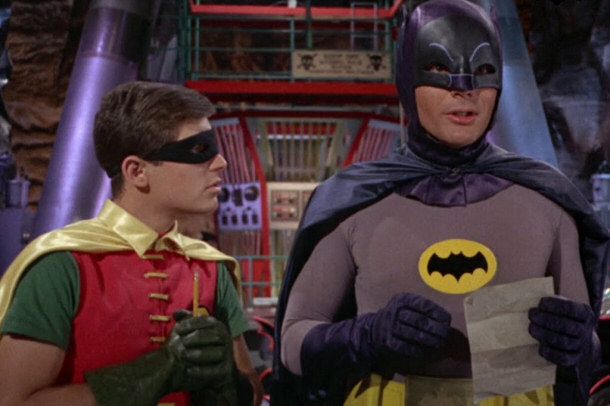
Conclusion
Even if someone loves literature, comics, video games and the cinema equally,
chances are, no matter how much they might love the idea of a cinematic
adaptation of their favorite book or video game, there’s a part of them that
would worry about a combination of the two, because they would know that the
likelihood is that the film industry just won’t get it right.
The core problem with film adaptations is that such projects are often
approached with the wrong attitude. Namely, that the film industry thinks it is
inherently better and that an adaptation is about improving upon the source
material. Rather, film makers need to appreciate that cinema is simply a
different artistic medium, not necessarily a better one.
Whether the source material in question is a novel, comic book/graphic novel
or video game, film makers need to appreciate that each medium has inherent
strengths and weakness, positives and negative – as does the film industry. When
film maker sets about producing an adaptation their goal should be to produce
something that pays homage to the source material, while striving to make
something that is not necessarily better, but just as good – in a different kind
of way.
Movies
Top Lists:
Top 15 Most Amazing Movie Theaters in the United States
14 Bleak Aspects of the “Golden” Age of Hollywood
10 Darkest Animated Films Ever Made
Informational:
The Role of a Director of Photography
Why the Film Industry Usually Ruins Cinematic Adaptations |